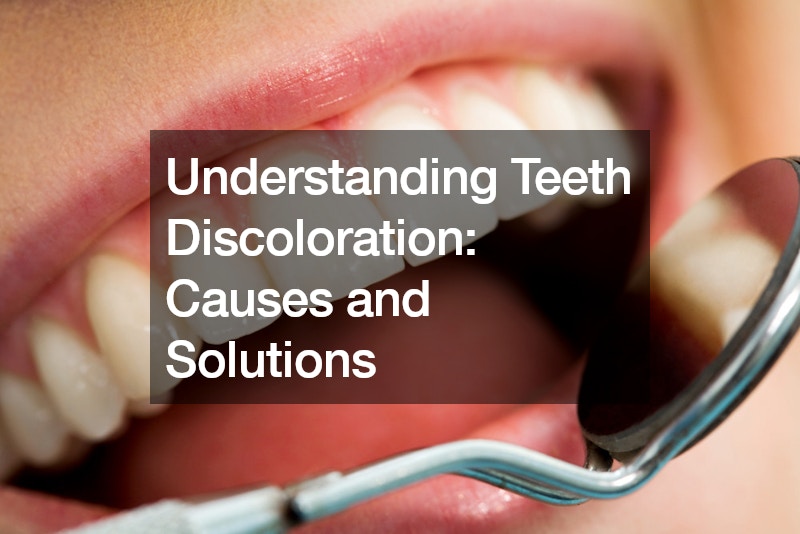Your smile is often the first thing people notice about you, and the color of your teeth plays a significant role in making a positive impression. However, many factors can lead to teeth discoloration, affecting the brightness and appearance of your smile. In this article, we will explore the common causes of teeth discoloration and the various solutions available to restore your pearly whites.
Anatomy of a Tooth
Before delving into the causes of teeth discoloration, let’s understand the basic anatomy of a tooth. Each tooth comprises three main layers: enamel, dentin, and pulp.
The enamel, the outermost layer, is a hard, protective covering that gives teeth their white appearance. Beneath the enamel lies the dentin, a yellowish tissue that forms the bulk of the tooth structure. Finally, the pulp contains blood vessels and nerves, providing nourishment to the tooth.
Causes of Teeth Discoloration
Teeth discoloration can occur due to a variety of factors, both intrinsic and extrinsic. Intrinsic stains develop from within the tooth and may be caused by:
- Dentin Changes: As we age, the enamel layer of our teeth wears down, revealing more of the yellowish dentin underneath.
- Medications: Certain medications, such as antihistamines and antibiotics, can cause teeth discoloration, especially in children whose teeth are still developing.
- Dental Trauma: Trauma to the tooth, such as an injury or impact, can lead to internal bleeding and discoloration of the tooth.
- Genetics: Some individuals may have naturally darker or yellower teeth due to genetic factors.
Extrinsic stains, on the other hand, affect the outer surface of the tooth and are typically caused by:
- Food and Drinks: Consuming highly pigmented foods and beverages like coffee, tea, red wine, and berries can stain the enamel over time.
- Tobacco Use: Smoking or chewing tobacco can lead to stubborn, yellowish stains on the teeth.
- Poor Oral Hygiene: Inadequate brushing and flossing can allow plaque and tartar to accumulate on the teeth, leading to discoloration.
- Aging: As we age, the enamel naturally becomes thinner, making the yellowish dentin more visible.
Solutions for Teeth Discoloration
Fortunately, there are several effective solutions available to address teeth discoloration and restore a bright, white smile. These include:
- Professional Teeth Whitening: One of the most popular methods for whitening teeth is professional teeth whitening performed by a dentist. This treatment involves the use of bleaching agents to remove surface stains and lighten the color of the teeth.
- At-Home Whitening Kits: Over-the-counter whitening kits containing bleaching gels or strips can also be used at home to whiten teeth. However, these products may not be as effective as professional treatments and should be used with caution.
- Dental Veneers: For more severe discoloration or other cosmetic issues, dental veneers may be recommended. Veneers are thin shells made of porcelain or composite resin that are bonded to the front surface of the teeth to improve their appearance.
- Regular Dental Cleanings: Maintaining good oral hygiene habits, including brushing twice a day, flossing daily, and scheduling regular dental cleanings, can help prevent and reduce teeth discoloration caused by plaque and tartar buildup.
Conclusion
Teeth discoloration can detract from the overall appearance of your smile and erode your confidence. However, with the right knowledge and treatment options, you can achieve a brighter, whiter smile that you can be proud of. If you’re concerned about teeth discoloration, schedule a consultation with your local dental office to explore the best solution for your needs.
.

